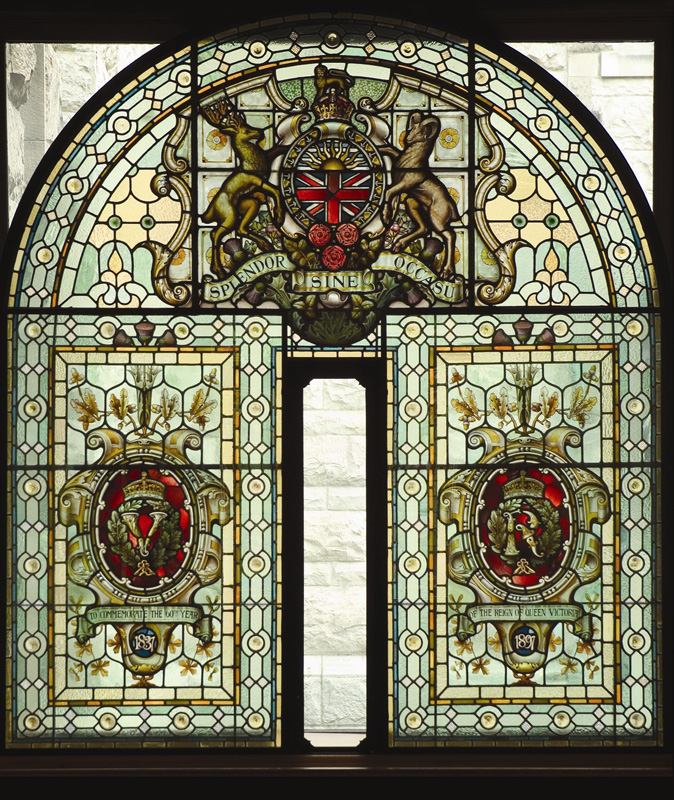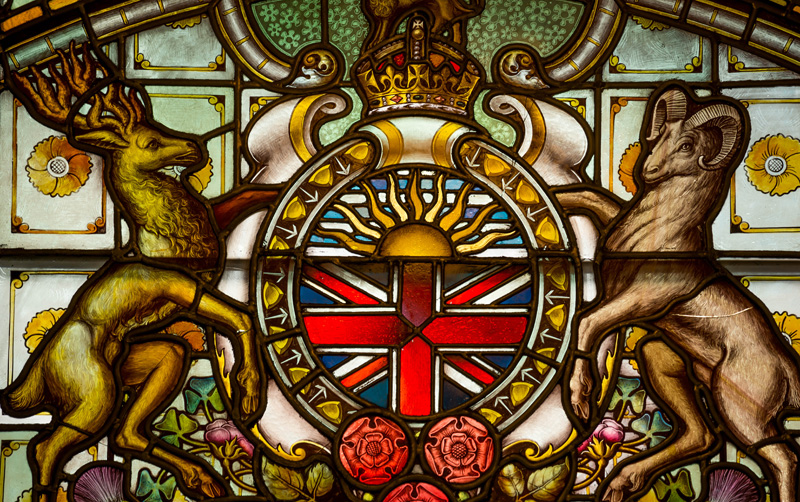The Queen Victoria Diamond Jubilee Window was commissioned for Queen Victoria's Diamond Jubilee - the 60th year of her reign in 1897. On the left side is the date of the 18 year old Queen Victoria's accession to the throne (1837), and to the right is the date of her Diamond Jubilee (1897). The letters "V" and "R" are Latin for Victoria Regina, or Queen Victoria.
The Diamond Jubilee Window was originally located on the second floor behind the Legislative Chamber. In 1912, due to the construction of the Legislative Library, it was placed in the cellar for safe keeping, where it remained for the next 62 years until it was rediscovered during the Parliament Buildings' restoration.
At the topmost portion of the window is British Columbia's original Coat of Arms. The government adopted this Coat of Arms in 1895. It contains many of the same symbols as the one used today. However, British Heraldry officials were unable to accept this design. It was considered inappropriate to have the British flag on the shield in an inferior position to the setting sun, as it contradicted the popular expression of the day that "the sun never sets on the British Empire." The flowers in the original are the emblems of the United Kingdom: the purple thistle of Scotland, the green shamrock of Ireland, the pink Tudor rose of England, and the yellow daffodil of Wales.
The Powell Bothers, the creators of Diamond Jubilee Window and other stained glass windows in the Parliament Buildings, had to ship all of their stained glass from England to Victoria. With this long and sometimes treacherous route, a rumour emerged that because each piece of glass was so fragile, it had to be shipped in a barrel of molasses. Despite the intriguing idea, it's unlikely that molasses was ever used to ship any of the glass. Molasses was fairly expensive, especially in the quantity needed to contain the numerous pieces of glass. If the cost of buying and shipping molasses wasn't a problem for the Powell Brothers, the mess of packing, unpacking, and cleaning the glass would make the entire process an undesirably sticky affair.







